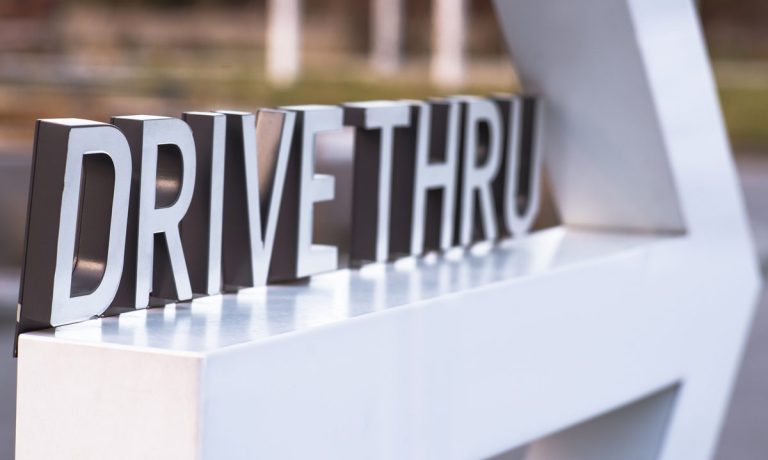Restaurants had a big year in 2021. The early months of the year marked the most advanced stages of the industry’s digital shift, as tech-enabled off-premises channels advanced rapidly while many consumers were still observing social distancing practices.
Later, as the vaccine rolled out and consumer mobility increased, restaurants were able to retain many of their new digital customers while finding increasingly omnichannel strategies to innovate the on-premises experience. Now, looking ahead towards 2022, here are a few key trends gaining traction that could take center stage in the new year.
Drive-Thru Automation
Major quick-service restaurant (QSR) brands are racing to automate their drive-thrus, while other restaurants that had never previously operated in the space are taking a tip from QSRs.
For instance, Shake Shack recently announced its first drive-thru, fast-casual chain, BurgerFi shared plans for its summer-of-2022 launch of in-car ordering, and in the fall, McDonald’s revealed that it is partnering with IBM to develop and implement automated order-taking (AOT) capabilities at its drive-thrus.
You may also like: New Ordering Technology Extends the Drive-Thru Beyond the Lane
Advertisement: Scroll to Continue
Reducing Friction in Paying the Check
With so much of the industry becoming increasingly frictionless, the check payment system at many table-service establishments lags behind. Diners still typically need to wait for a server to come by to ask for their check, wait for the check to arrive, wait for it to be collected and then wait for their card to be returned.
“Not many people think, ‘Oh, I want [a QR code payment option]’ unless they’ve used it, because no one knows there is an alternative,” Victor Lugger, co-founder and CEO of mobile restaurant payment solution provider sunday, told Karen Webster in an interview. “Why? It’s because it’s been 60 years of using credit card machines, so no one is challenging this, but before they launched Uber, no one saw that there was an alternative to raising your hand to hail a cab.”
Read more: Sunday CEO Says QR Code Payments End Game is Making Cost of Payments Free for Restaurants
Availability Across More Digital Spaces
In 2022, contextual commerce will be key. As grocers integrate purchasing options into culinary content across the web, restaurants are finding their own ways to appear outside of their own digital platforms or the typical third-party marketplaces.
For instance, in October, major fast-casual chain Chipotle Mexican Grill announced the opening of a virtual location in the digital world of gaming platform Roblox.
Earlier in the year, Yum! Brands — parent company of Taco Bell, KFC and Pizza Hut — acquired chat-based ordering and marketing platform company Tictuk, which creates software that enables consumers to engage with brands and to place orders through messaging platforms including SMS, WhatsApp, Facebook Messenger and Telegram.
The Shift From Delivery to Pickup
As labor challenges persist, the delivery channel is becoming increasingly difficult for restaurants, who are often unable to meet demand in a cost-effective manner. As such, many establishments are looking for ways to incentivize digital customers to take advantage of the pickup channel, effectively outsourcing the work of transporting the food to consumers’ homes to the consumers themselves.
One of the main ways that restaurants are doing this is by offering increasingly quick and convenient curbside pickup options, allowing consumers to enjoy their off-premises meal without having to leave their cars.
Related news: Domino’s Looks to Outsource Delivery to Customers With Self-Pickup of Pizzas
New Ways to Drive Value for Rewards Members
As digital rewards programs become the norm, restaurants are looking for ways to differentiate their offerings without stepping up the dollar value of their deals and giveaways — driving loyalty without sacrificing profitability. One of the main pushes across the board is to develop increasingly sophisticated ways to use consumer data to present even more personalized messaging and offers.
Another is to find cost-free rewards to give, such as exclusive menu items and insider access. For example, Chipotle announced in September that it was gamifying its rewards program with achievement badges.
“We’re seeing an incredible increase in frequency with our Chipotle rewards members across the board — we now have over 23 million members in the program,” Nicole West, the brand’s vice president of digital strategy and product, told PYMNTS in an interview. “I [have been surprised by] the excitement level for Extras, even when there’s no monetary value to them. Sometimes simply being rewarded for doing Chipotle the way you Chipotle is enough for our customers.”
See also: Chipotle: Brands Can Drive Loyalty Without Bearing the Cost of Freebies or Discounts




